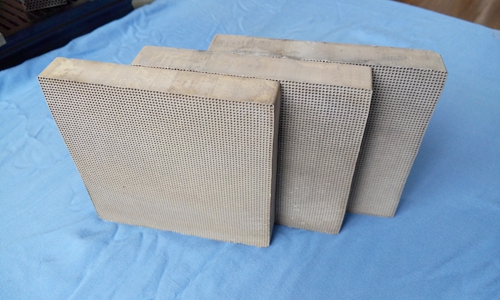HCHO Removal Catalyst
The normal temperature HCHO removal catalyst is a high-tech functional material product. The catalyst consists of four parts: Honeycomb ceramic matrix, Porous oxide carrier, Catalytic active component and Auxiliary component, it catalytically oxidizes HCHO into CO2 and H2O at room temperature , the HCHO purification rate reaches more than 95%, and the HCHO concentration can be reduced to less than 0.1ppm. In addition, the catalyst also has sterilization and deodorization functions. It is the best choice for air purification in homes, offices, and automobiles. It is widely used in household appliance industries such as air conditioners and air purifiers, and is also used in aircraft, ships, tanks, submarines, etc. Closed air circulation system.
Working Principle
HCHO+O2
→ RCD catalyst → H2O+CO2
It catalytically oxidizes
HCHO into CO2 and H2O at room temperature
Quality standards for normal
temperature HCHO removal catalyst
|
TEST ITEM
|
Standard Specification
|
|
Density of 2h HCHO
|
<0.1ppm
|
|
Airspeed
|
≥1×103h-1
|
|
Service life
|
1~5
years
|
|
Heap specific gravity
|
0.66±0.05g/mL
|
|
Compressive
strength
|
≥12MPa
|
|
Active component
|
Platinum (grey); copper oxide,
manganese oxide, silver oxide (black)
|
|
Appearance
|
Gray (service
life ≥ 3 years) or black (service life ≥ 1 year)
|
|
Packing
|
Moisture-proof seal
|
The size could be customized
1. For hanging air conditioners: 105×35×10(100 mesh) 
2.For air purifiers and central air conditioners: 147×147×20 (200 mesh) 
3.For closed air circulation systems such as
aircraft and ships: 129×124×20 (200 mesh)

Precautions for use
The normal
temperature HCHO removal catalyst can be installed in household appliances such as air conditioners and air
purifiers to perform internal air circulation purification. It can also be
installed in air circulation systems in tanks, airplanes, ships, submarines and
other closed spaces to perform sterilization, deodorization, Triple effect of
formaldehyde removal. It is not necessary to remove the moisture-proof seal if
it is not used for a long time. If the catalyst fails due to moisture, it can
be regenerated by drying at 70°C or vacuum drying at 40°C for 2 hours, or it
can be exposed to the sun for 2 hours for regeneration.
|
